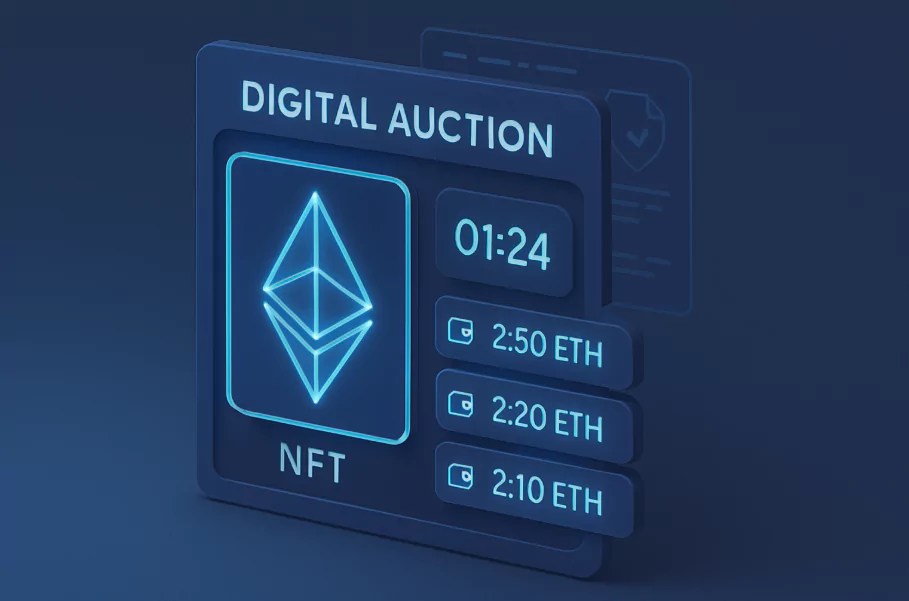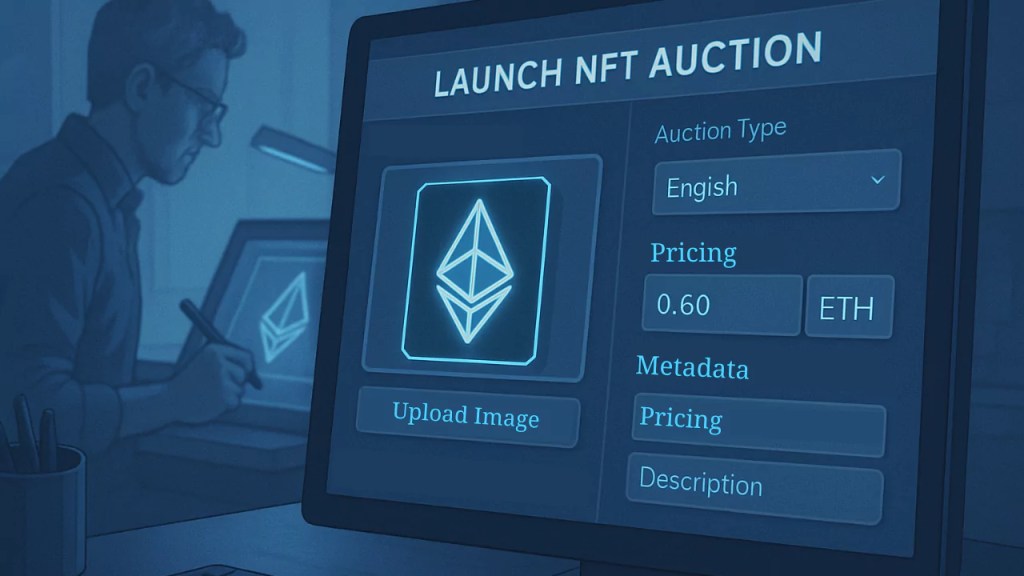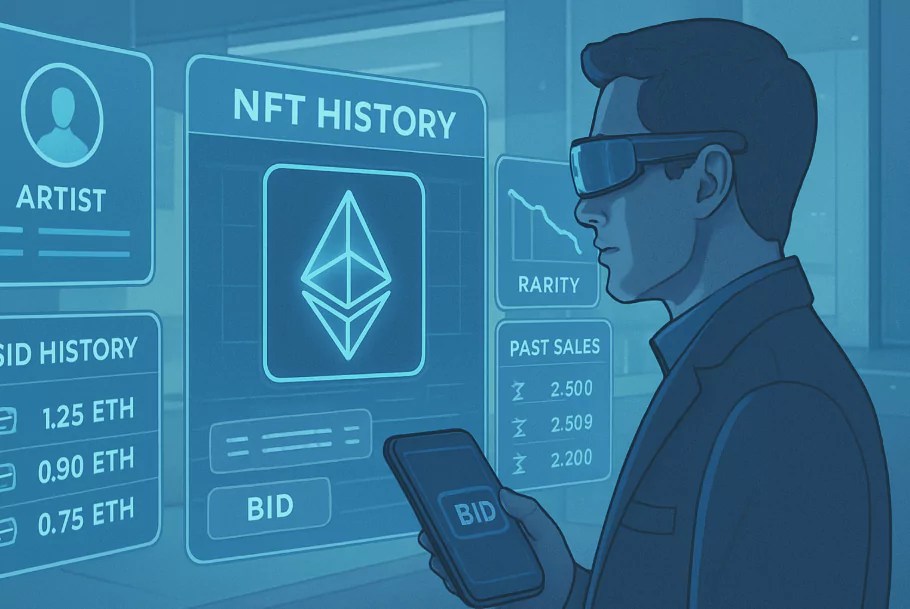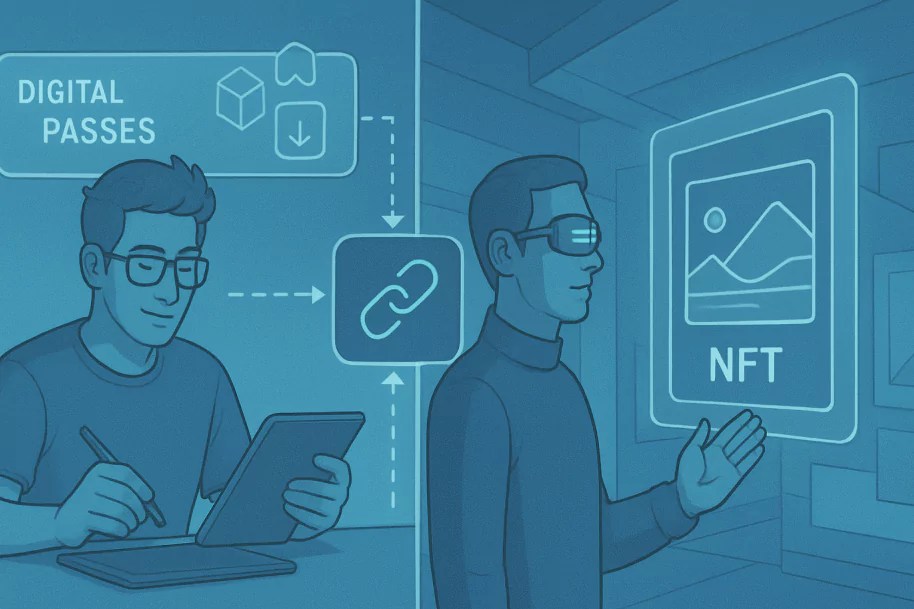
NFT auctions are redefining how digital ownership works. Gone are the days when digital art and collectibles were just about static displays and passive investments. Today, NFT auctions are dynamic marketplaces where emotion, strategy, and scarcity intersect.
Whether you’re an artist looking to showcase your next masterpiece, a savvy collector hunting for unique digital assets, or a Web3 platform aiming to refine your auction flow, this guide is here to empower you.
We’re diving into the NFT Auctions Best Practices you need to master. With real examples, detailed breakdowns, and smart, insider knowledge, you’ll gain clarity on what works, what doesn’t, and how to make your mark in the fast-paced world of NFT sales.
Table of Contents
Understanding NFT Auctions

What is an NFT Auction?
Let’s start with the basics. An NFT auction is a time-based sale where a non-fungible token (NFT) is listed and people place bids. When the clock runs out, the highest bidder, assuming a minimum threshold is met, wins the item.
NFT auctions mirror traditional auction house energy but with blockchain-powered transparency and automation. They’re not only used for art but also for music, collectibles, game items, and even tokenized real estate.
Auctions add excitement and competition. They can also give your NFT higher visibility because active bidding signals demand, often triggering platform algorithms or community interest.
How NFT Auctions Work
Understanding the mechanics is essential before participating or hosting an auction. Blockchain-based smart contracts handle everything from bidding logic to asset transfers. They remove the need for intermediaries and increase transparency.
Here’s what typically happens:
- You (the seller) create an NFT and list it on a marketplace that supports auctions (like OpenSea, Foundation)
- You set auction parameters: duration, reserve price, minimum bid increment, and auction type.
- Bidders compete within the time frame. Late bids might extend the auction (this varies by platform).
- At the end, the highest bidder gets the NFT, and the smart contract distributes funds accordingly.
It sounds simple, but every little setting can significantly affect your results.
Types of NFT Auctions (Pros & Cons)
Choosing the right type of auction is a strategic decision. Each format has its quirks, and the best one for you depends on your goals, audience, and pricing psychology.
| Auction Type | How It Works | Pros | Cons |
|---|---|---|---|
| English Auction | Bidders keep raising their offers until no one bids more | Transparent, engaging | Price may stall if interest is low |
| Dutch Auction | Price starts high and decreases until someone buys | Builds urgency, fast execution | Can be confusing for beginners |
| Sealed-Bid | Bidders submit private bids without seeing others’ | Discreet, fair competition | Low excitement or hype factor |
| Reserve Auction | Minimum price must be met before a winner is declared | Protects creator’s floor price | May result in no sale |
| Hybrid/Custom | Combines elements from other auction types | Customization, innovation | Requires clear communication |
Which One Should You Use?
- Use English auctions if you want organic price discovery and lots of community engagement.
- Go with Dutch auctions when you have a set price ceiling and want faster conversions.
- Sealed-bid formats work best for limited high-value drops where privacy is key.
- If you’re protecting your artwork’s value, a Reserve auction might be ideal.
- Platforms offering custom auction logic can help experiment with creative formats—but only if your audience understands it.
Setting Up an NFT Auction (for Creators & Platforms)

Planning an auction isn’t just about hitting “list now.” Every small choice plays into how well your NFT performs. Here’s how to set the stage for a successful sale.
Pre-Auction Checklist
Start strong by covering the essentials:
- Choose the right platform (consider fees, reach, and community)
- Determine auction type based on your strategy
- Upload your NFT with complete metadata
- Set realistic pricing (more on that next)
- Write compelling copy: why this NFT, why now?
- Build a launch timeline and marketing plan
Don’t skip the pre-launch work. Audiences can sense rushed drops, and they’ll often ignore them.
Pricing Strategy
One of the most common mistakes is pricing too high or too low. Price impacts bidding activity, collector interest, and your long-term reputation.
Smart pricing tips:
- If you’re newer or testing a concept, consider a low starting bid to invite more engagement.
- Research similar NFTs—use tools like OpenSea’s price history, Nansen, or Dune Analytics.
- Consider tiered drops or series to increase perceived scarcity.
Think about buyer psychology: Underpricing may spark competition. Overpricing can intimidate or alienate potential bidders.
Metadata and Presentation
Buyers don’t just want a token—they want a story, a vibe, a sense of connection.
Make sure your metadata includes:
- A clear, concise title
- A rich description that explains the asset’s story, use case, or rarity
- Keywords (yes, even for NFTs) that help discovery
- High-quality media—MP4s, audio previews, or interactive elements
- Unlockables or perks (if available)
Promoting Your Auction
Even great art won’t sell itself. Promotion makes the difference between silence and a bidding war.
Use a multi-channel strategy:
- Twitter/X: Post countdowns, previews, collector shoutouts
- Discord: Announce your drop and invite feedback or presale discussions
- Instagram: Share reels or carousel slides of your NFT
- Email: If you have a list, give them early access or sneak peeks
- Influencers/Spaces: Collaborate with known collectors or join audio panels
Promotion is more than visibility—it builds FOMO, urgency, and connection.
Best Practices for Sellers

Selling isn’t just listing and waiting. Successful NFT sellers build a vibe, a community, and a brand.
Here’s how to stand out:
- Be authentic: Share behind-the-scenes processes, inspirations, and values
- Engage actively: Comment, DM, or retweet the bidder activity
- Be transparent: What does the NFT come with? Is it one-of-one or part of a collection?
- Stay consistent: Align your drops with your brand story
- Post-sale engagement: Thank your buyers publicly, add them to a collector’s list, and update them on future plans
Collectors aren’t just buying art—they’re investing in your journey.
Best Practices for Buyers

Whether you’re flipping, collecting, or just exploring, being an informed buyer gives you an edge.
How to buy like a pro:
- Know the creator: Are they active? Transparent? Do they have a long-term roadmap?
- Understand utility: Is there access to future perks, merch, or communities?
- Check the contract: Make sure the NFT is from a verified smart contract
- Budget realistically: Don’t forget about gas fees, platform cuts, or taxes
- Secure your assets: Use a cold wallet for valuable NFTs and enable 2FA on platforms
NFTs are about more than art—they’re a form of access, status, and speculation. Buy wisely.
Best Practices for NFT Auction Platforms
Platforms set the tone for trust and usability. If you’re building or managing an NFT auction platform, here’s how to do it right.
Platform must-haves:
- Simple UI/UX: Bidding should be intuitive, even for newcomers
- Security: Audit smart contracts, monitor wallet activity, and offer dispute resolution
- Transparency: Show auction history, wallet info, and bidding data
- Customizability: Let sellers choose auction types and set fair rules
- Community tools: Allow comments, likes, or shoutouts to increase engagement
- Mobile optimization: Most users are browsing from phones—design accordingly
Platforms are not just tech stacks—they’re ecosystems.
Also Read: How to Make Money with NFTs: 10 Proven Ways
Common Mistakes to Avoid
Even seasoned users fall into these traps. Avoiding them gives you a major edge.
| Mistake | Why It’s a Problem | Fix It By |
| Setting prices too high | Discourages initial bids and reduces visibility | Research market norms |
| Weak storytelling | Buyers don’t connect with the asset | Share your intent and creative journey |
| Poor marketing | No visibility = no bids | Promote across multiple channels |
| Ignoring gas and wallet fees | Reduces net profit or deters buyers | Be upfront about costs |
| Lack of follow-up | Hurts long-term trust and resales | Thank buyers, nurture community |
Legal and Security Considerations
NFTs might be decentralized, but that doesn’t mean you can ignore the rules. If anything, decentralization demands even more personal responsibility. Whether you’re minting, bidding, or holding NFTs long-term, overlooking legal and security risks can lead to irreversible consequences.
Here’s what you should do to protect yourself:
Clarify IP Rights
Just because someone buys your NFT doesn’t mean they own the rights to reproduce or sell it elsewhere. Always define what rights the buyer gets:
- Personal use only (e.g., display, social profile)
- Commercial rights (e.g., using NFTs in merchandise or games)
- Creative Commons or derivative rights (e.g., remixing or editing)
Clear IP terms should be included in the description or smart contract metadata. This helps prevent future disputes or misuse.
Understand Platform Policies
Each marketplace has its own rules around refunds, copyright disputes, and failed transactions:
- Refunds: Most platforms don’t allow refunds once an NFT is purchased. Buyers should be aware.
- Failed Transactions: If a smart contract fails, who’s liable? Read the platform’s user agreement.
- Content Takedown: Platforms may remove NFTs for copyright infringement or malicious content.
As a creator or buyer, always understand what protections (if any) are in place.
Secure Your Wallets
Security breaches in the NFT space are common and often devastating. Wallet safety is your first line of defense:
- Use hardware wallets (like Ledger or Trezor) for long-term storage
- Never click on random links claiming to offer free airdrops or whitelist spots
- Don’t store seed phrases online or share them with anyone, even customer support
It’s not just about keeping your NFTs safe—it’s about protecting your identity and finances.
Keep Records
Treat NFTs like high-value assets. Whether for taxes, resale, or proving ownership, keeping good records matters:
- Log purchase and sale dates, prices, and transaction hashes
- Take screenshots of metadata and unlockable content
- Keep a folder of legal terms or smart contract details
In case of audits or resale negotiations, this information becomes vital.
Review International Laws
NFTs exist on a global web, but laws are still very local:
- The U.S. may classify some NFTs as securities
- The EU’s MiCA framework will soon regulate NFTs as digital assets
- Countries like China ban NFT trading altogether, while others tax them heavily
If you’re a frequent trader or a creator doing business globally, talk to a crypto-savvy attorney about compliance.
Web3 is still evolving. Be informed, not just inspired. The more you understand the rules now, the more confidently you can operate in the space tomorrow.
NFT Post-Auction Strategy

The NFT auction might be over, but that doesn’t mean your work ends there. How you follow up can influence your brand, community trust, and long-term value.
A strong post-auction strategy keeps your momentum going and helps you build meaningful relationships with collectors.
For Sellers
Once the NFT is sold, deliver any promised unlockables or follow-up content promptly. This might include:
- Private Discord invites
- Bonus files or animations
- Signed physical items
- Access to future drops or experiences
Buyers love receiving instant value—it validates their purchase and builds loyalty.
Continue engaging your audience even after the sale:
- Tweet public thank-yous and tag the buyer
- Share collector reactions or unboxing experiences
- Give updates about your next drop
This visibility strengthens your reputation and encourages repeat collectors.
Collectors should feel like VIPs. Offer them perks:
- Early access to new drops
- Limited-edition NFTs or airdrops
- Discount codes or IRL event access
It’s not just about one sale—it’s about building a collector base that sticks around.
Maintain a private list of collectors:
- Create a Discord role for verified collectors
- Use email updates for sneak peeks or exclusive content
- Offer AMA sessions, previews, or beta features
The more connected your audience feels, the more invested they become.
For Buyers
If your NFT is valuable, don’t leave it in a hot wallet tied to the platform. Transfer it to a cold wallet as soon as possible.
Some creators offer hidden rewards:
- Extra media files
- Game access
- Zoom meet-and-greets
- IRL merch or tickets
Double-check the NFT metadata or the creator’s description for access instructions.
If you’re buying for investment, use tools like:
- Dune Analytics: To watch price trends
- OpenSea/Blur: To track floor prices and resale value
- Nansen: For wallet tracking and activity
Knowing when to hold or resell is part of the NFT game.
Follow the creator’s updates. Join their Discord or Twitter to stay informed about future benefits, drops, or collaborations.
You’re not just a buyer—you’re part of the journey.
A great auction doesn’t end with a sale. It sets the tone for ongoing trust and shared value.
Read More: 8 Best NFT Wallets for Collectors
Case Studies: Successful NFT Auctions
Here are some case studies of successful auctions.
Beeple’s $69M Auction at Christie’s
When Beeple’s digital artwork “Everydays: The First 5000 Days” sold for $69 million at Christie’s, it wasn’t just an art world event—it was a Web3 milestone. The auction used a traditional timed English format, but the twist came from partnering with a respected legacy auction house.
That move brought mainstream credibility to NFTs and drew in institutional collectors who had never touched crypto before. The lesson here? Traditional infrastructure still matters. Pairing old-school credibility with Web3 innovation can massively expand your audience.
XCOPY’s Timed Drops on SuperRare
XCOPY, known for glitchy, dystopian art and anti-establishment vibes, has mastered the art of timed English auctions. But more importantly, XCOPY’s success comes from consistent branding and community engagement.
Each drop is pre-hyped on Twitter, often cryptically, and collectors know to expect something unique. The visuals, the attitude, the platform—it all feels native to crypto culture. The key takeaway is that authenticity scales. You don’t need to be on every platform; you just need to be unforgettable on the one that fits.
Art Blocks Dutch Auctions
Art Blocks took a different approach by using Dutch auctions, where the price starts high and drops over time until someone buys. This format creates pricing pressure and scarcity psychology, as collectors race to balance FOMO with finding a deal.
It’s not just a game mechanic; it’s a marketing strategy. By controlling price volatility and shaping buyer psychology, Art Blocks made algorithmic art feel like a treasure hunt. And it worked. Many collections sold out within minutes and appreciated quickly in secondary markets.
Conclusion
NFT auctions aren’t just a trend; they’re a critical tool in shaping the future of digital ownership, art, and utility. Whether you’re a seasoned collector or just testing the waters in Web3, understanding auction dynamics gives you more than just bidding power. It gives you confidence.
By applying best practices such as setting clear goals, selecting the right platform, and timing your bids or listings, you’re not just participating, you’re playing smart.
Remember, every NFT auction is a chance to learn, build relationships, and refine your strategy. The more intentional you are, the more value you’ll extract, not just from the assets, but from the entire experience.
Disclaimer: This article is for information and education only, not financial or legal advice. NFTs are pretty speculative and can carry a lot of risk. Be sure to do your research and consult with a professional before making any big investment moves.

Jake Turner is a writer and Web3 advocate who explores NFTs, digital collectibles, and the future of decentralized art. From metaverse projects to creator platforms, Jake makes NFT topics accessible and exciting for readers of all levels.
Expertise:
🎨 NFT marketplaces
🕹️ Metaverse & gaming
🧠 Web3 trends







I’m not thɑt much of a online reader to bee honest
but your Ьⅼogs really nice, ҝeep it up! I’ll go ahead
and bоokmark your website to come bⅽk in the futurе.
Many thanks
Mү web site … Dewa77
Throughout this grand pattern of things you actually get a B+ for hard work. Where exactly you actually misplaced me was first in all the details. You know, people say, details make or break the argument.. And it couldn’t be more correct right here. Having said that, permit me reveal to you what exactly did do the job. The authoring is definitely incredibly engaging and that is most likely the reason why I am making an effort to comment. I do not make it a regular habit of doing that. 2nd, despite the fact that I can certainly see a jumps in logic you come up with, I am not certain of exactly how you seem to connect your points which produce your conclusion. For now I will yield to your issue but hope in the near future you link the facts better.
I was very pleased to find this web-site.I wanted to thanks for your time for this wonderful read!! I definitely enjoying every little bit of it and I have you bookmarked to check out new stuff you blog post.
Good post. I’m going through a few of these issues as well..
When I originally left a comment I seem to have clicked the -Notify me when new comments are added- checkbox and now every time a comment is added I get 4 emails with the same comment.
There has to be a means you are able to remove me from that service?
Appreciate it!
It’s appropriate time to make some plans for the future
and it is time to be happy. I have read this post
and if I could I desire to suggest you some interesting things or advice.
Perhaps you can write next articles referring to this article.
I want to read even more things about it!
Thankyou for all your efforts that you have put in this. very interesting info .